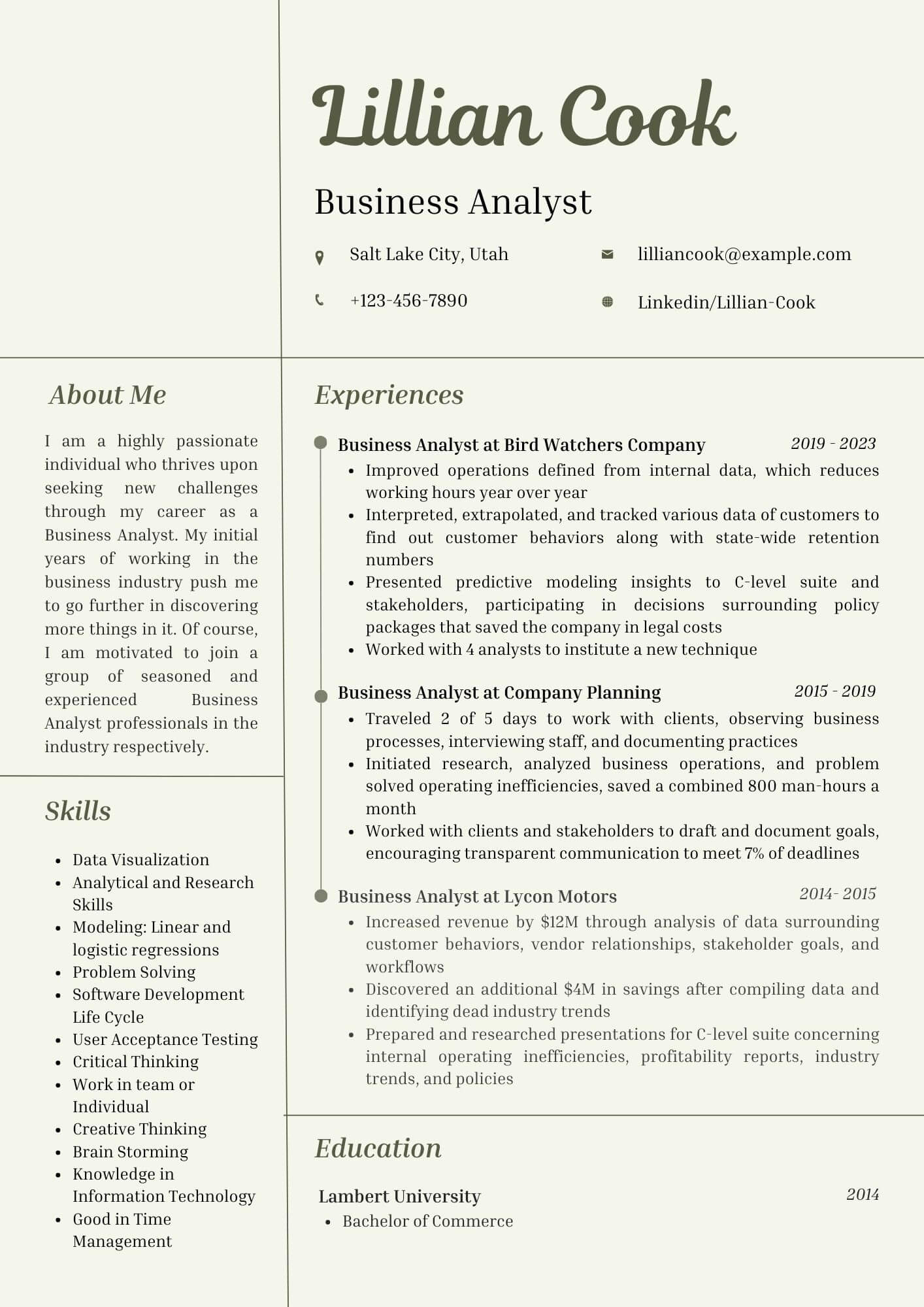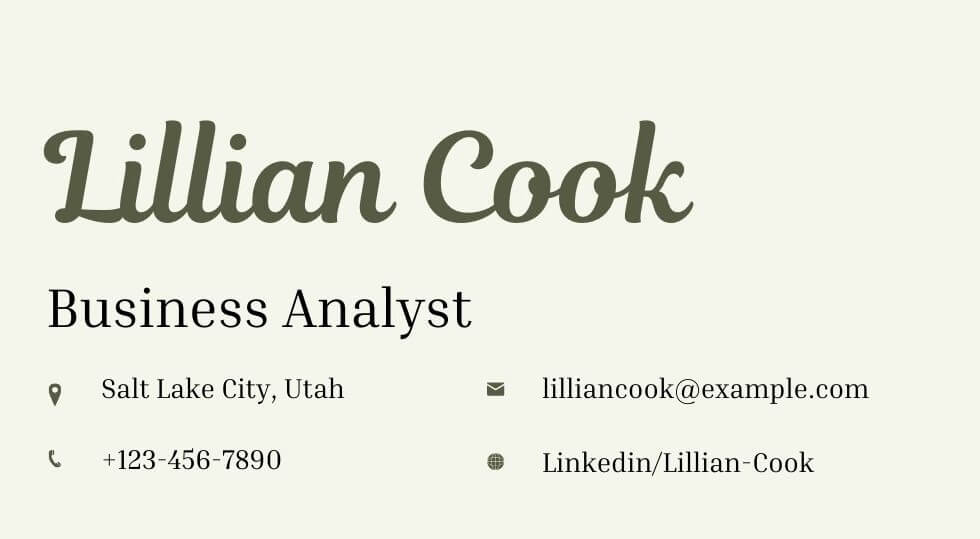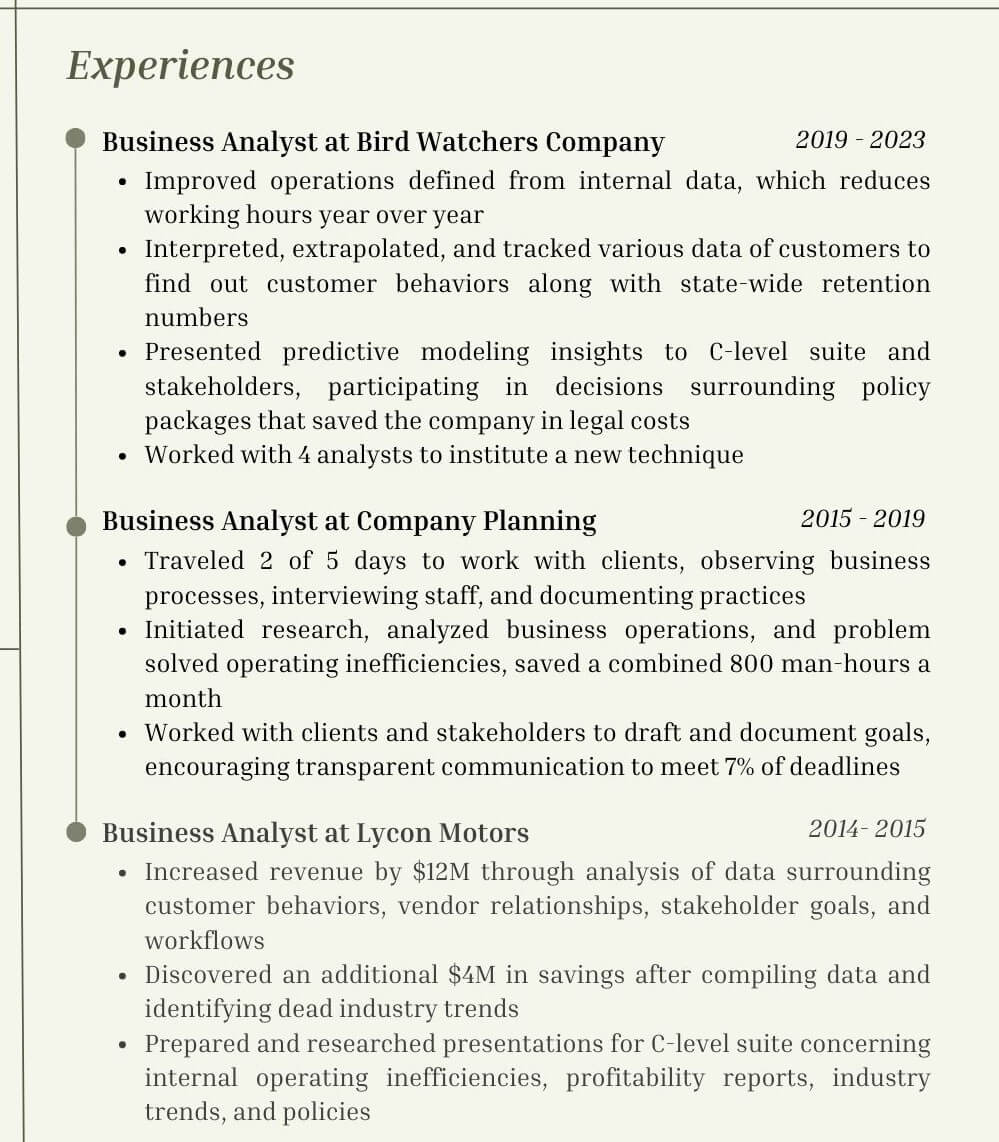As one of the most in-demand jobs of the year, there are always hundreds of applicants for the post of business analyst. Therefore, if you want to stand out, you have to have the best resume of all the applicants.
How do you do that? That's what we're going to teach you by answering these simple questions.
- How do I format a resume?
- How do I add contact details to a resume?
- How do I write a resume summary?
- How do I include work experience?
- How do I add my educational qualifications?
- How do I include my skills?
- What additional sections should I use?
Or you can use our resume builder and have us create your resume for you.
1. How do I format a resume?
There are three resume formats: the reverse-chronological, the skills-based, and the combination format. Of the three, the reverse-chronological is most commonly used and is the recommended format. It is best to not overwhelm a hiring manager with an unfamiliar format. Your resume should also be only one page long or if you are very experienced, it can extend to a second page.
An example of a reverse-chronological resume

2. How do I add contact details to a resume?
You should always include your contact information in a resume. The best way to do this is to add it to the top of the resume so it is clearly visible. You should include your name, position, telephone number, email address and a mailing address in city/state format. You can also include a link to a professional profile such as LinkedIn if you want. Just make sure that is an up-to-date profile and has a professional look.
An idea of how to correctly add contact details

3. How do I write a resume summary?
A resume summary should be two or three short sentences detailing your experience and what you can bring to the company. It can also cover your skills. As a summary is usually placed at the top of your resume, it can be the first impression that you give an HR manager. To make your resume stand out, try including general keywords or ones from the job listing so that your resume passes ATS screening.
If you are not sure whether your resume has keywords, use Cresuma's keyword finder to check your resume.
A well-written resume summary

4. How do I include work experience?
Including your work experience is a great way to show companies how your career has grown and how much you have learnt. In a resume, you typically add your latest or newest work experience first and work your way backwards over a period of no later than 10 years.
However, there is a format that you should use when including work experience. You should mention the name of the company, how long you worked there beginning from the month/year you began - the month/year that your employment ended, your position in the company and include two to three bullet points of notable achievements in a quantifiable format. You should also try to avoid using buzzwords as they give a recruiter a negative impression of your resume.
Not sure if you have any buzzwords in your resume? That's fine, we have a buzzword finder that will help you to go over your resume.
A perfect example of work experience in a business analyst resume

5. How do I include my educational qualifications?
Your educational qualifications can be a big boost to your resume. It shows that you are qualified in your field and have taken the necessary steps to learn the technical side of the field. You should start with the newest qualification first and then move back to your college degree. If you want, you can also add your high school diploma to this section, but it is not necessary.
Like with work experience, there is a format that should be followed. You should include the educational institution, the years you studied and the qualification that you received.
An ideal educational qualifications section

6. How do I include my skills?
A hiring manager could concentrate only on your skills in your resume, so this section should be perfect. Include a mixture of hard and soft skills that would be relevant to your job role. If you have any skills that were specifically mentioned in the job listing, you should include them here.
A perfect skills section

7. What additional sections should I use?
If you have more space in your one page, you should include additional sections that are related to the field or can be an asset to you in your role. These can be things like additional certifications, awards that you have received, other languages you speak or even your hobbies and interests.
And that's how you create the perfect resume for a business analyst. If you have more resume questions, check our career guides' blog or our resume samples page for more help.

